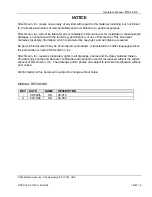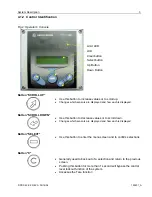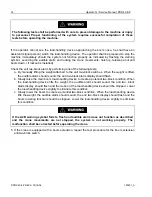
General Information
© PRS 40 EZ REV A 03/16/06
190201_A
1
1 GENERAL
INFORMATION
The PRS 40 EZ System has been designed to provide indication from various types of sensors, i.e.
A2B, Load, Wind and Angle.
The A2B system will warn the crane operator of a two-blocking condition of the crane. If a two-blocking
condition is approached, the system will warn the operator by sounding an audible alarm, flashing the
backlit LCD and locking out those functions which may aggravate the crane's condition, whenever
applicable.
If the system is set up for load, angle or wind, limits can be set by the user. When these limits are
exceeded the system will warn the operator by sounding an audible alarm, flashing the backlit LCD
and de-energize the lockout relay.
The system relay can be connected to the cranes lockout system. If so, the system will lock out when
exceeding any of the user limits.
NOTE:
The term "two-block" is a crane term that refers to a condition when the load handling device
comes in contact with the boom head. This condition, if not prevented, may cause the wire rope to
break, allowing the load to fall. Either raising the load into the boom head, or telescoping the boom out
without paying attention to the hoist line can cause a "two- block" condition.
2 WARNINGS
The PRS 40 EZ System is an operational aid, which warns a crane operator of approaching two-block
conditions, which could cause damage to equipment and personal injury.
This device is not, and must not be a substitute for good, sound operator judgment, experience and
use of accepted safe crane operating procedures.
The responsibility for the safe operation of the crane remains with the crane operator who must ensure
that all warnings and instructions supplied are fully understood and observed.
Prior to operating the crane, the operator must carefully and thoroughly read and understand the
information in this manual to ensure that the operation and limitations of the system and the crane are
known.
The system can only work correctly, if all sensors/transmitters have been properly set. For
correct setup, the operator has to answer thoroughly and correctly all questions asked
during the setup procedure in accordance with the real rigging state of the crane. To prevent
material damage and serious or even fatal accidents, the correct adjustment of the system
has to be ensured before starting the crane operation.
Always refer to operational instructions and load charts provided by the crane manufacturer
for specific crane operation and load limits.








































